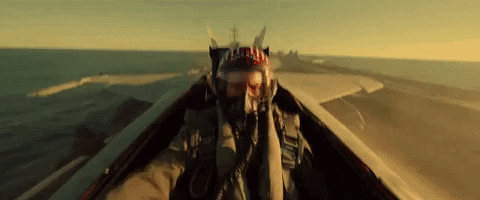- The Tempo
- Posts
- The Need for Speed - Volume 3
The Need for Speed - Volume 3
Coach Max Frankel's series on why triathletes NEED to train at higher intensities
Max Frankel is a former elite cyclist and collegiate runner and is currently a triathlete and coach based in Boulder, Colorado. Max is an accomplished coach in the marathon, track, and both short and long-course triathlon having coached multiple athletes to professional licenses in triathlon, wins at the marathon and ultramarathon distances, and numerous Boston Marathon, Ironman World Championship and 70.3 World Championship qualifiers.
If you’d like to inquire about his coaching or have any questions/feedback on this new segment of The Tempo, feel free to drop Max an email at [email protected].
Welcome back to The Need for Speed! In today’s edition we’re going to discuss what zone 6 training looks like for pros, and some of the ways their workouts can be modified to be even more effective. Professional athletes typically tend to receive the cutting-edge of training philosophy first, before coaches adapt and trickle down the same ideas for age-groupers, but there’s never a better time than the present to get even better at optimizing performance.
In today’s edition:
Why longer rest is sometimes more beneficial to improving performance
Common traps athletes and coaches fall into when assigning high-intensity workouts
Overcoming our inherent bias towards aerobic strain.
I recently found myself sitting in on the performance meeting of an anonymous triathlete as their performance team went over perceived weaknesses in the athlete’s training, and tossed around solutions for how to improve them. One of the key points that came up was high-intensity output for <30 second bursts in the middle of the bike leg during races (out of corners and up short climbs). This was a weakness that had previously cost the athlete results, and prior to the meeting they had been working quite hard on improving their output and capacity for these efforts in training. However, the performance management team was unsure if enough gains had been made to soften their concerns about these efforts’ impact on results.
One of the first things I noticed in this discussion was that every time this athlete was working on their zone 6 output/capacity in training, the efforts were firmly set within already demanding conditions - either surges inside longer efforts, or on very short rest. I voiced my concern and placed it in language we can all understand:
“If your “sprint” 25s in the pool are on the :20 or the :25, you aren’t working your sprint–that’s a threshold or VO2 set.”
If the only time you’re going hard is on short rest, you’re creating a situation where it’s highly unlikely your output will improve–continuing the swim example, if a 25 sprint for you is 15 seconds, doing a bunch of 18 second 25s on the :20 or the :25 isn’t going to help you bring that down to 13 or 14. It might be helping you convert that 18/25y on the :25 to a 36/50y on the :50, but the goal here isn’t getting aerobically “fitter” or more durable–it’s just about not getting dropped when the gas is floored by the strongest riders in the race.
To achieve that goal, we need to learn how to take long rest.
Our sport needs to address a bias that coaches and athletes, including some of the most successful ones on the planet, harbor in our understanding of training–one that we’ve held onto even as swimming, cycling and running have moved onto greener, more enlightened pastures.
Every second of every minute of a triathlon hurts (at least, if you’re doing it right–I think). As I’ve discussed in past editions of The Need for Speed, triathletes know how to put themselves in an aerobically exertive hurt locker and wear that intimacy with burning pain on their sleeves as a badge of honor. But, on both a macro and micro level, that attachment to pain is holding us back. We wrongly assume that every component to getting faster must be hard.
If you walk into a gym anywhere in the US and head towards the big heavy objects, surrounded by overbuilt specimens with bodybuilding posters on their walls, you’re more likely to encounter these individuals standing around than actually doing any work. We turn our noses up, and maybe snicker–these folks, while very strong, know nothing of the pain that makes up the backbone of our athletic existence and identity (I’m speaking generally here–maybe you don’t like to suffer!).
But they’re doing something critically right here–in order to make muscle fibers stronger, which is very different from making the heart and lungs stronger, we need to load them as optimally as we can. The reason the bodybuilders sometimes only do a few reps of high weight is because after that small number of efforts, they’re no longer able to optimally load their fibers–and continuing would be of no benefit to their desired performance. We can learn something from this–if we want to be able to push more watts for a short effort on the bike, inside our context of high-end aerobically exertive pain, one of the easiest ways to go about that is **drumroll**... learn to push more watts, period.
Going back to the anecdote we started with, I brought up that if the given athlete wanted to increase their power above VO2 max, they should do similar efforts stripping away the aerobic strain they’re carrying through them, and then return to the short rest efforts with a renewed ability to push raw power. I can only hope they took it to heart – as I too hope that everyone can get more bang for their buck by training smarter, not always harder, and not always painfully, either.

Reply